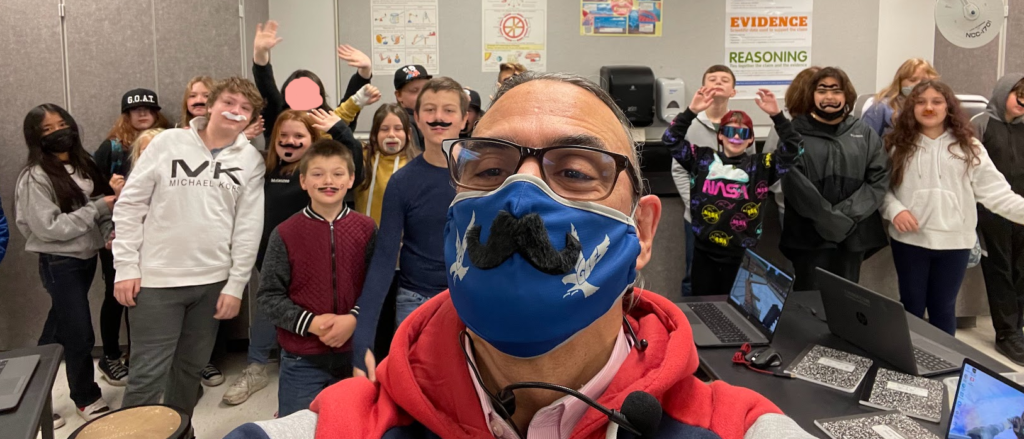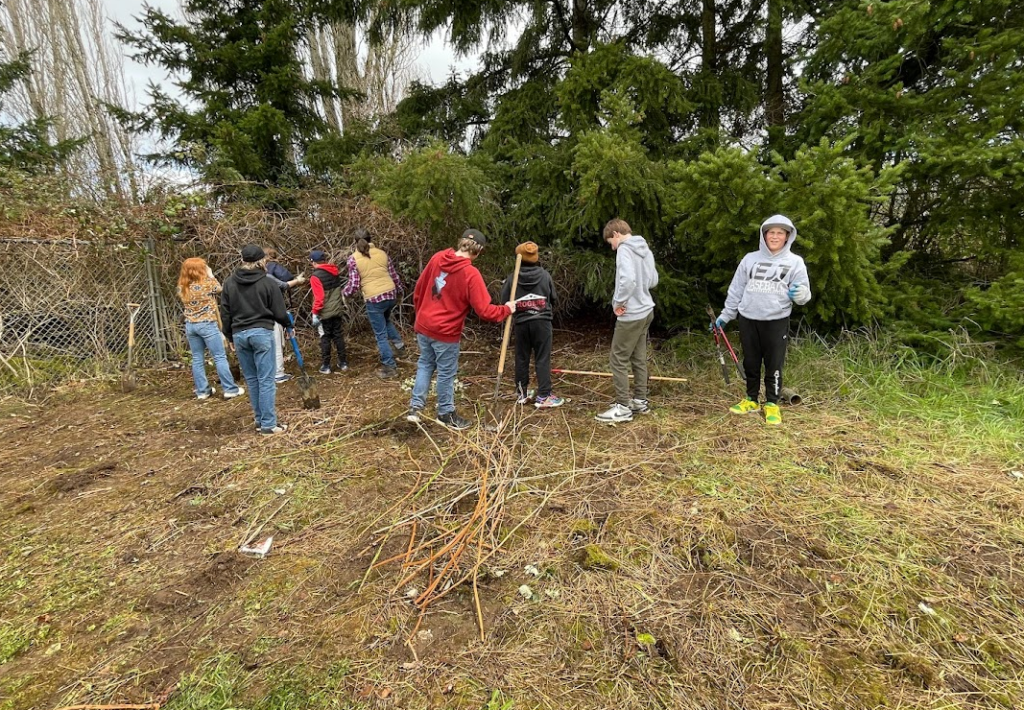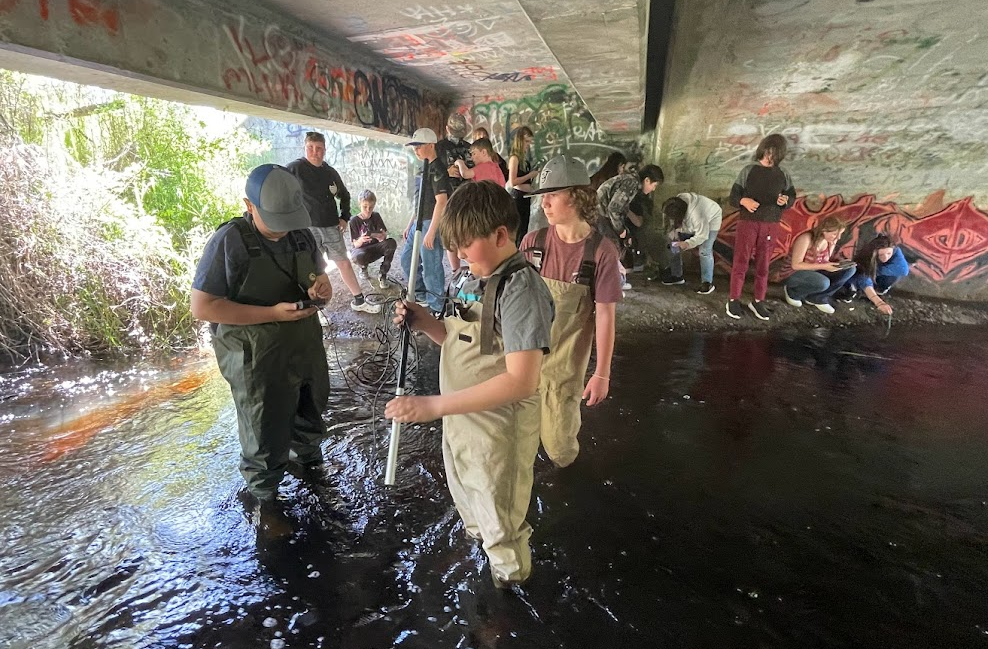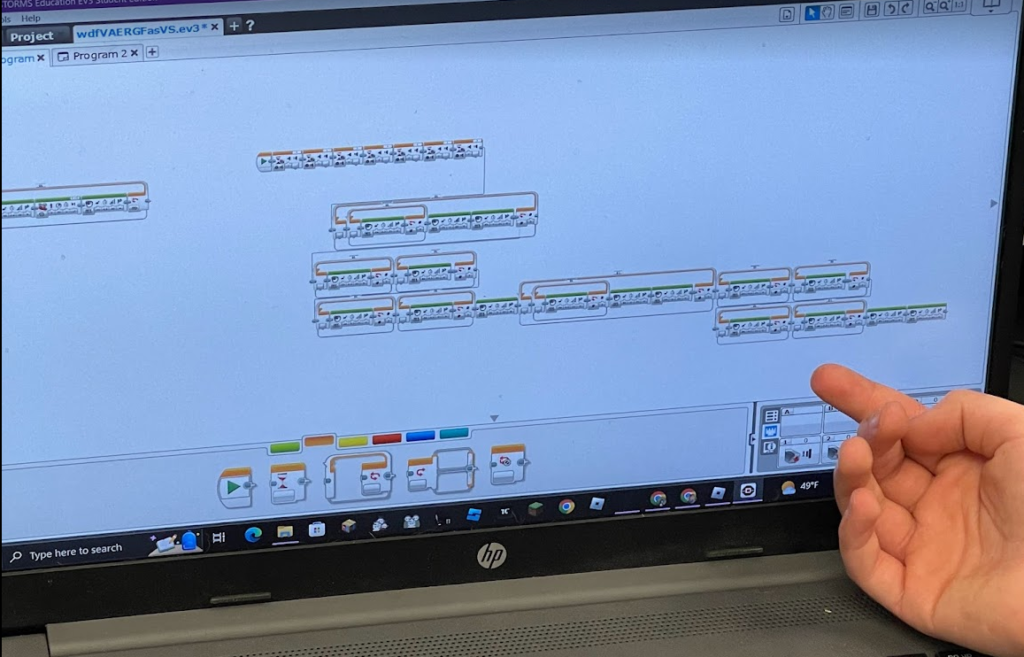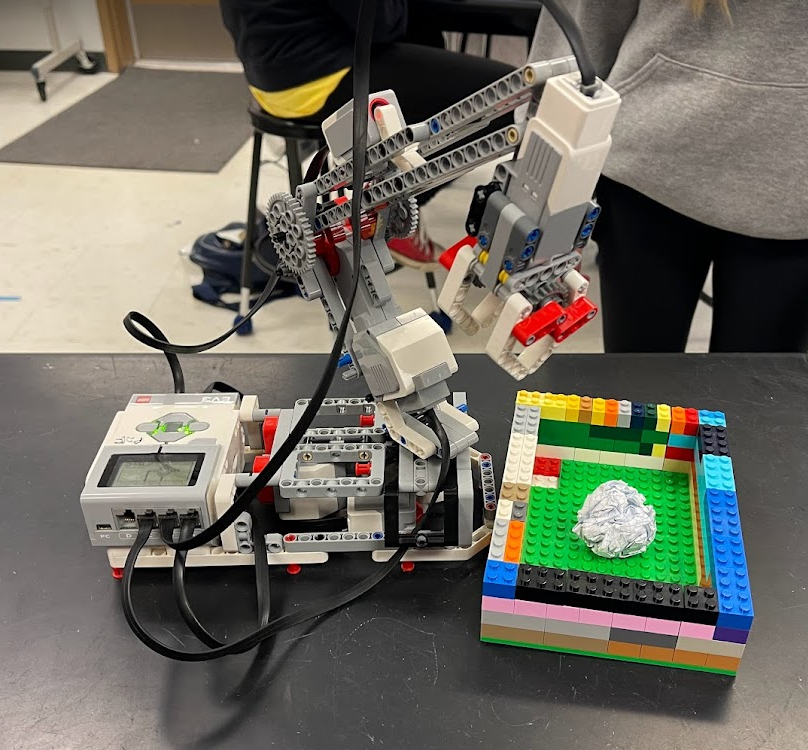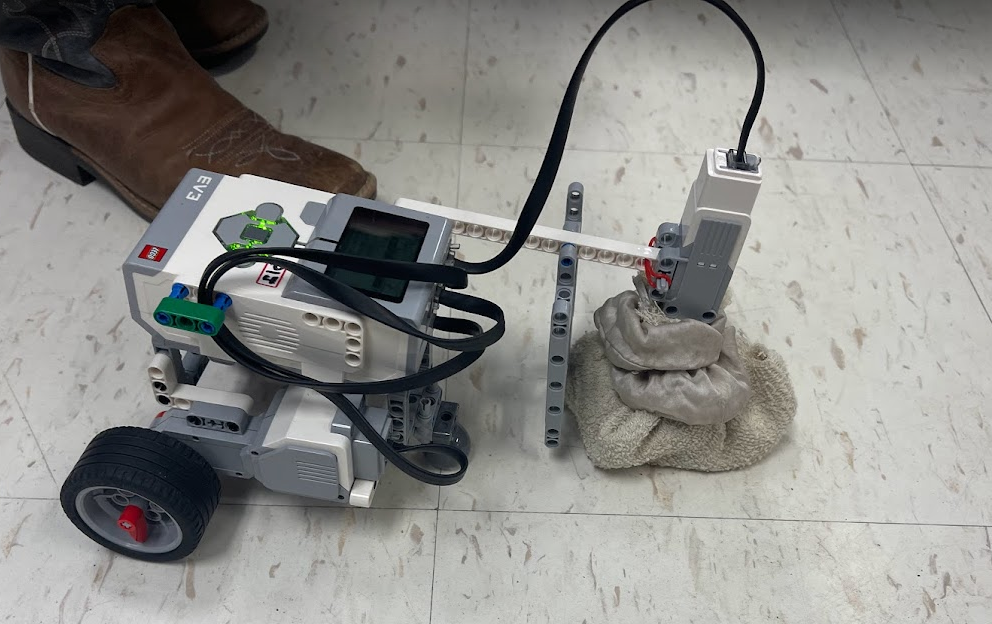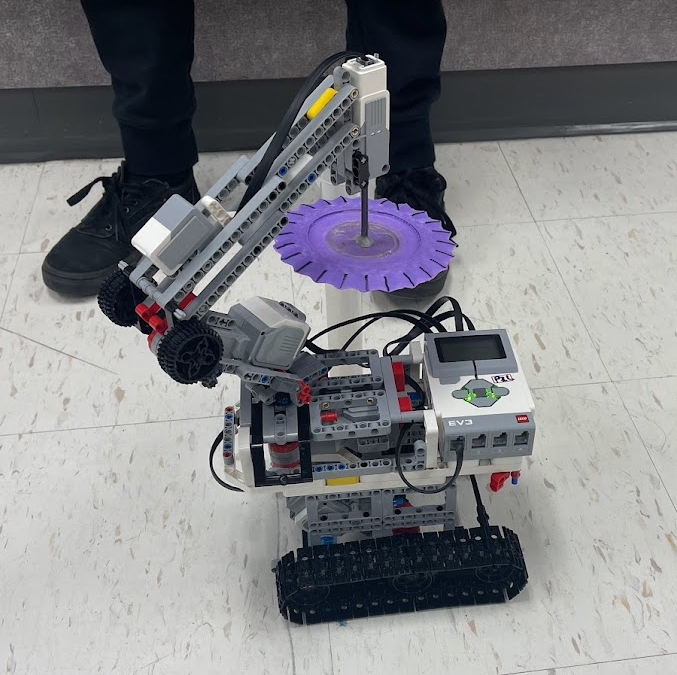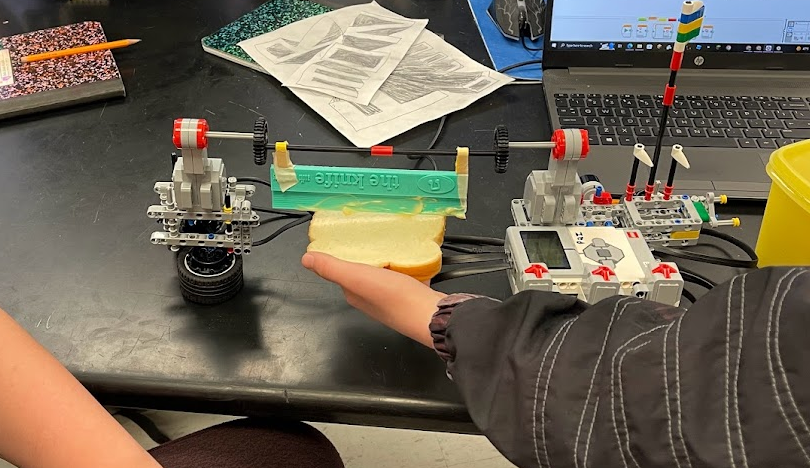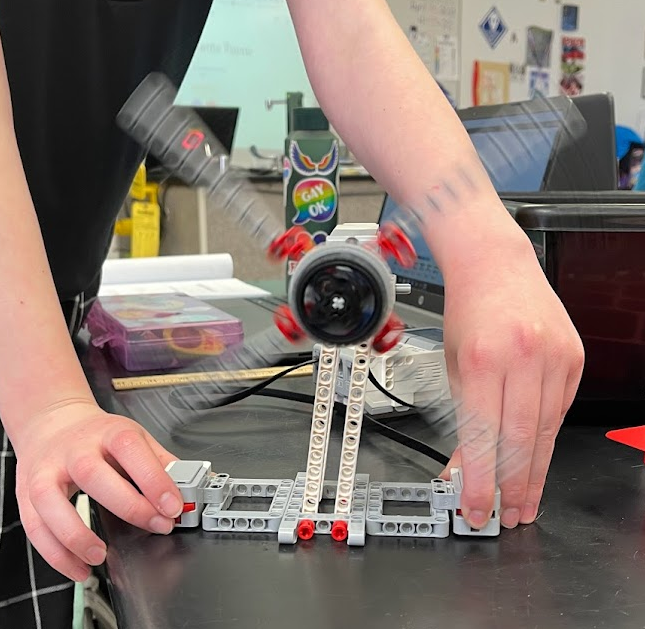After COVID it was nice to start the school year like almost normal. Kids were in full classes of 24 or 25 giving us 75 students (14 5th graders and 61 6th graders) in three classes and they were coming to school all day, every day. I was teaching only Science, another teacher taught ELA and Social Studies, and a third teacher taught Math making our three-person PLC team. After getting COVID last spring when I finally took my mask off (mandate was lifted) I spent most of this year wearing my masks indoors. This spring I took my mask off and kept it off all spring hoping I wouldn’t catch COVID and I am so grateful that I did not catch it again! I did get a bad, nasty cold this past winter though and that was not pleasant so even masking indoors around children was not enough. I’m not sure what I’ll do next year during the fall and winter. While I’d rather not mask indoors every day like I did this year, it is reassuring with all the viruses that went around this year.
Even though it was a seemingly on the surface normal school year, something about this year, not just because some of us wore masks and most of us did not, was off and really different. I was happy to see kids being accepting and respectful of each other’s choices to mask or not mask but something else was off. We expected kids to be excited about being back in school full time, not for school but to be around each other, and with each other. Getting along and working together was high on my list of skills to give kids time to practice and boy did they need it. Peer to peer conflicts and arguments and yes, even fights, were plentiful. We noticed that even after teaching, modeling, practicing, and reviewing our rules, procedures, and routines kids were still not following them. November came and went, December came and went, winter break came and went, the new year came and we were still dealing with behaviors that pre-COVID would not have been so rampant by that time of year. We were still modeling, reviewing, and practicing what we meant by be kind and be respectful to each other and your teachers. Rules and procedures and routines needed a lot of review.
Here is a Wakelet collection (shown below) that I created for my students at the end of this year to show them all the wonderful activities we did this year and to remind them of the standards we had the opportunity to learn. I told them, “I don’t want you telling your 7th grade Science teacher that you didn’t learn anything next year.” I was only partly joking.
At about week 5 of school I noticed that I had to send home a list of assignments that were overdue because many kids were not done with all of them, and when I say many, I mean most. Our policy is that we assign reading for homework and only assign other work when it’s not completed in class. Spoiler, only a small handful of students did any homework for me even though at one point or another every single student had some work that was not completed in class that should have been completed for homework. I am still quite shocked at that. My only slight comfort is that more students completed their reading homework for their Language Arts class and more students worked on the Aleks math program at home for Math class. I still do not understand why they didn’t want to work on my assignments since they were Quizizz’s, Phet Simulations, and Edpuzzle videos. AND, and this is the kicker, all of the assignments that were not completed in class that became homework still earned experience points and gold once completed!! Kids love Classcraft and gaining XP to level up and get more stuff and new powers and getting more gold so they can buy all their new gear yet only a handful ever completed missing work at home this entire year.
That was an amazing observation for me. It seemed that kids were still behaving like they did during lockdown – being at home, often alone or at least left to their own, meant that kids would get their assignments from school and then do whatever they wanted anyway and never complete their actual school assignments. To save their sanity and in honor of SEL we allowed such behavior and supported kids in getting through the global pandemic any way they could. Using our school-issued computers and Wi-Fi to play and connect actually brought me some peace as I saw my own daughter suffer through depression at not getting to attend her Running Start college classes in person for her senior year. But now we’re seeing that same “freedom of choice” where kids are told to complete assignments in class and just not doing them. Socializing instead of working is nothing new, of course kids would rather socialize than do school work, but this year socializing was not the only thing kids were doing instead of work. They were also looking up silly memes, connecting with others on Discord, and playing games during class! So I know what they were doing at home INSTEAD of homework! This was an ongoing battle all year and some kids struggled with staying off of their Discord-like apps and games.
Since I use Classcraft as my main Learning Management System or LMS along with Google Classroom, I am able to have students complete assignments as fast or as slow as they need to because for the students who complete work quickly, more work unlocks for them (sometimes I’m rushing to add more work for those kids but I always add work so they are challenged and have plenty to do). That allows me to touch bases with the kids who are working more slowly to see if they need help or if they just need to buckle down and work. This year, it was mostly kids needing to just buckle down and do the work. The self-discipline, self-management required to focus on the work at hand instead of doing whatever you want was sorely lacking in a majority of students as evidenced by how few kids finished assignments.
Week 6 started and all the missing assignments from the first five weeks of school were now homework. I shared that with parents on Classdojo and reminded them every week and yet no communication and very few asking if their kid was one of the ones with missing assignments. Even after progress reports and parent teacher student conferences at the end of October, the work was still not getting done. All right then, we moved on to our robotics unit which we started with the Coding in Minecraft curriculum to help kids with the coding. After seven weeks I had to finally move everyone on to actually working with the Lego Mindstorms EV3 kits and start building actual robots. After seven weeks only 18, that’s less than 25% of my students, completed the Intro to MakeCode 3.0 course. That’s the first course with seven assignments. That’s 18 out of 75 kids. At least 33, that’s almost 45%, made it to lesson 6 and were close to finishing. And yet not one of those 15 who finished lesson 6 and only needed to complete lesson 7 to get their intro badge and complete the entire course did it. It was homework. AND lesson 7 was to program the agent to start building four different structures, which the students could then decorate and adorn anyway they wanted to in full creative mode, which was worth quite a bit of XP and gold in Classcraft to boot! I still just don’t get it. Who doesn’t want to play Minecraft for homework?!?
This trend, of work unfinished in class and not getting done for homework continued. I had to merge our Nature’s Fury robotics project (adapted from a First Lego League past challenge) with the Potential Energy Efficiency Design robotics project (adapted from a STEM Robotics 101 assignment) because teams were taking too long. I finally had to stop the Potential Energy Efficiency Design project because we were running out of school year and needed to start my environmental stewardship project, which was cut down considerably. [Curious about what I did with the potential energy project, here’s how I use it with 5th and 6th graders, here’s how AI helped me and kids with it, here’s a rubric I made from an EMC2 Learning template, and here’s a CER conclusion idea.]
Only two out of 75 students completed their potential energy eportfolio entry to turn it in. At least 13 of 75 turned in an environmental stewardship eportfolio entry and that is still abysmal.
I show the above samples of amazing robots that were designed and built for the Nature’s Fury and then Potential Energy Efficiency Design robotics projects because there were teams that did build amazing robots and many even programmed them successfully using at least one sensor to make the robot more than a remote-controlled machine. But so many teams never finished their robotic solution and even fewer ever completed the final assignment of reflecting on, self-assessing and scoring their work, and sharing their work on their eportfolio.
I doubted myself, my strategies, my procedures, my teaching. Even though I read the Smart Classroom Management blog and have bought two of Michael Linsin‘s books and have worked at using his strategies, I doubted whether I was implementing them well enough. One of his posts reassured me that I was indeed using sound strategy to support my students in getting their school work done (read Students Who Don’t Do Any Work). As Michael suggests in that post, I teach my butt off every time I stand before students. I use a workshop-like model where I conduct a mini-lesson then let kids work for most of the class period so that I can go around and support/help kids and answer questions as they come up. When I see situations that confuse or confound students, I conduct another whole-class mini-lesson to help then let them get back to work. So number 1, teach great lessons, I will unashamedly say yes, yes I do. For number 2, let them be, that is my teaching style! I don’t want to lecture all period so I have kids doing, working, designing, building, working cooperatively. Check. Number 3, praise the work and not the student, yes! I’ve been doing that since Carol Dweck’s work on mindsets became widespread in education. That was one of my main takeaways from her work that praising students for being smart encourages a fixed mindset. My goal is to give feedback and help students get to the next part of their work.
So I am still confused why it didn’t work. All I could think is that kids got so used to doing what they want that they are just not wanting to do what we tell them if they just do not want to do it! According to Dan Pink, having autonomy and choice is highly motivating to people and that was evident this year. Having to deal with this force of kids doing what they wanted and just not doing what I assigned them no matter how much fun it was plus having to deal with negative behaviors and peer-to-peer conflicts was EXHAUSTING. We were working our butts off doing what teachers do year after year – balancing the SEL needs of our students with the education we are tasked with providing them. Yes, their SEL needs are essential and cannot be ignored when working with the whole child. And yes, we are tasked with teaching or at least facilitating learning of content and skills. And with the world touting low NAEP test scores and “lagging skills” the pressure is on to catch up. BS. I will not mince words, here. It’s all BS. Kids will catch up on their own time and rushing them will do more harm than good. I will still work tirelessly to help my kids learn Science and the standards but if I learned anything this year it’s that they will do what they will do and I have to get them to THEIR next step and not someone else’s idea of where my students should be.
Here are this year’s electronic Google Sites portfolios with only a small portion of them having completed the few entries that they needed to complete. I did get 71 of my 75 students to complete my end of year survey so that was helpful. Overall I got the same feedback I get every year – for most kids they have nothing to tell me, some kids loved what we did and a few kids struggled and had some feedback for me of things to change. The best feedback was this year’s students to next year’s students! That was telling so I put all their feedback together and will share with next year’s students at the beginning of the year (click here if you don’t see the Google doc below):
Overall, I had a GREAT year. It was completely rewarding and I left my 6th graders very fond of them and sad to see them go. I wish I had one more year with them because now we know how to work together, student-to-student and with me. Luckily I will get to work with our 14 5th graders again next year. That will be a gift.
Exhausting and confusing school year? Yes. Rewarding and good? Also a resounding YES!

